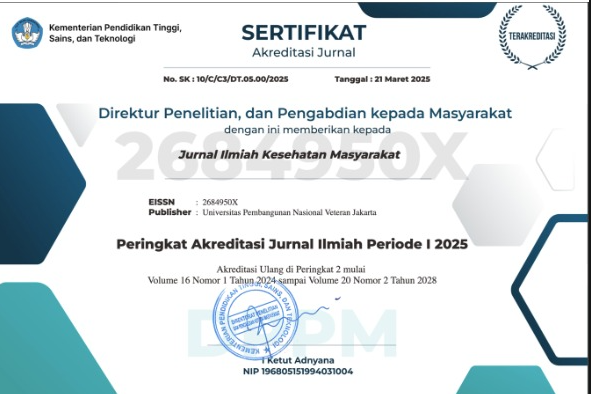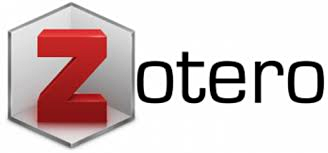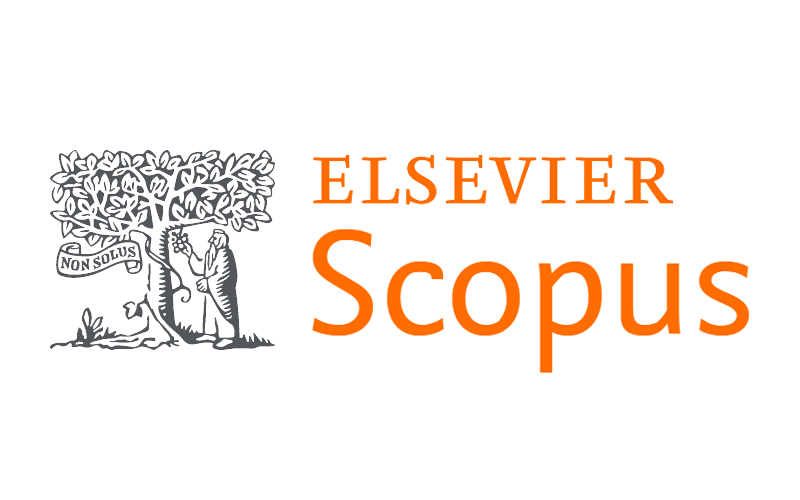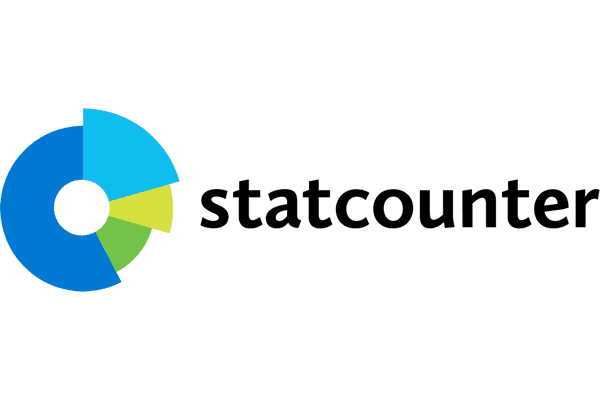Relationship between Exposure to Solid Waste and Dengue Incidence in Communities Surrounding Bakung Landfill Bandar Lampung
Abstract
Abstract
Background: Dengue Hemorrhagic Fever (DHF) is a significant public health issue in Indonesia, including Bandar Lampung City. Environmental factors, such as poorly managed landfills, are suspected to contribute to the increase in dengue cases by creating conditions supporting the breeding of Aedes aegypti mosquitoes, particularly through stagnant water formed among unmanaged waste piles. The aim of this study was to analyze the relationship between exposure to solid waste (household waste, non-hazardous industrial waste, and construction waste) around the Bakung landfill and the incidence of dengue fever in the surrounding community.
Method: Cross-sectional design was conducted in February 2024 in 200 households within a 500-meter radius of the Bakung landfill, selected through purposive sampling. Data were collected through structured questionnaires, interviews, and environmental condition observations. Statistical analysis used chi-square tests and logistic regression to determine relationships and main risk factors.
Result: research results show that there was a significant relationship between solid waste exposure and the incidence of dengue fever (p=0.019), with communities exposed to solid waste (household waste, non-hazardous industrial waste, and construction waste) having a 3 times greater risk of contracting dengue fever compared to those not exposed (OR=3.01; p=0.013). In addition, the habit of maintaining environmental cleanliness was also significantly associated with the incidence of dengue fever (p=0.027). The community with good cleanliness habits has a lower risk of contracting dengue fever (OR = 0.43; p = 0.029).
Conclusion: This study emphasizes that poor waste management and low environmental hygiene increase DHF cases. Therefore, efforts to improve waste management in Bakung landfill, community education related to sanitation, and government intervention in disease vector control are needed to reduce the incidence of DHF in the area.
References
Ridho Hartono. Buku Saku Stop Demam Berdarah. Yogyakarta: Husada Mandiri; 2020. 6 p.
Masriadi. Epidemiologi Penyakit Menular. Vol. 109, Pengaruh Kualitas Pelayanan… Jurnal EMBA. 2020. 109–119 p.
Manullang E V, Hafid M. Deteksi Dini Demam Berdarah Dengue (DBD) dan Pengendaliannya di Indonesia 2023. 2023;1–14.
Nadia TS. Demam berdarah masih mengintai. Mediakom. 2024;
Maharani NE, Nurbaya F, Sari DP. Hubungan Sanitasi Lingkungan dengan Keberadaan Jentik Nyamuk Aedes di Wilayah Kerja Puskesmas Umbulharjo I Kota Yogyakarta. MAHESA Malahayati Heal Student J. 2024;4:2068–80.
Sugiyono. Metode penelitian kuantitatif, kualitatif, dan R&D. Bandung: Alfabeta; 2021.
Yusnita, Dewi N, Mardhatilla, Corsita L, Al Hakim R, Darwel, et al. Penulis : DASAR-DASAR EPIDEMIOLOGI. 2022. 122 p.
Rahadatul A’isy N, Ernawati K, Gunawan A, Komalasari R, Segadi S, Ramdhani AN. Hubungan Sanitas Lingkungan Dengan Kejadian DBD: Tinjauan Sistematika Review dan Menurut Pandangan Islam Relationship between Environmental Sanity and DHF Incidence: A Systematic Review and Islamic Perspectives. Jr Med J. 2022;1:492–503.
Rochmawati EAA, Asih AYP, Syafiuddin A. Analisis Perilaku Masyarakat dan Sanitasi Lingkungan dengan Kejadian Penyakit Demam Berdarah Dengue. Media Kesehat Masy Indones. 2021;20:416–22.
Faruk MO, Jannat SN, Rahman MS. Impact of environmental factors on the spread of dengue fever in Sri Lanka. Int J Environ Sci Technol. 2022;19:10637–48.
de Souza Leandro A, de Oliveira F, Lopes RD, Rivas AV, Martins CA, Silva I, et al. The fuzzy system ensembles entomological, epidemiological, demographic and environmental data to unravel the dengue transmission risk in an endemic city. BMC Public Health. 2024;24:2587.
Juliska S. Hubungan Antara Insiden Demam Berdarah Dengue ( DBD ) dan Faktor Sanitasi Lingkungan : Tinjauan Sistematik Review. Heal Inf J Penelit. 2023;15:1–10.
Irawan A, Harokan A, Wahyudi A. HUBUNGAN SANITASI LINGKUNGAN DENGAN KEJADIAN PENYAKIT DEMAM BERDARAH DENGUE ( DBD ) DI WILAYAH KERJA UPTD PUSKESMAS KENTEN LAUT KECAMATAN TALANG KELAPA KABUPATEN BANYUASIN TAHUN 2024. 2022;9:562–9.
Rosmala F, Rosidah I. Hubungan Faktor Resiko Kesehatan Lingkungan Dalam Pengelolaan Sampah Padat Dengan Kejadian Demam Berdarah Dengue Di Kelurahan Hegarsari Kecamatan Pataruman Kota Banjar. J Kesehat Komunitas Indones. 2019;15:23–34.
Sidabutar S. Edpid. Buku Ajar Epidiomologi. 2020. 54–62 p.
Barek LMA, Pitang Y, Herminsih A. Faktor Lingkungan dan Perilaku dengan kejadian Demam Berdarah Dengue (DBD) di Dusun Kampung Baru Desa Magepanda Wilayah Kerja Puskesmas Magepanda Kabupaten Sikka. Jamhesic. 2020;85–92.
Gathani T, Dodwell D. Epidemiology. Breast Cancer Radiation Therapy: A Practical Guide for Technical Applications. 2022. 3–5 p.
Sang Gede P. Buku Ajar Penyakit Berbasis Lingkungan. Minist Heal Repub Indones. 2016;31–40.
Ningsih TN, Azizah R. Analisis Pengaruh Partisipasi Masyarakat dan Pengelolaan Sampah 3R Terhadap Penyakit Demam Berdarah. J Kesehat Tambusai. 2023;4:4119–29.
Balqis N, Elmayati, Salami. Hubungan perilaku masyarakat dalam pengelolaan sampah dengan kejadian DBD ( demam berdarah dengue ). J Sains Ris. 2023;583–9.
Astuti EP, Fuadzy H, Prasetyowati H. Housing Environment Health Effects on the Incidence Rate of Dengue Haemorragic Fever Based on Generalized Poisson Regression Models at West Java (Riskesdas’ further Analysis 2013). Bul Penelit Sist Kesehat. 2020;19:109–17.
Sutriyawan A, Suherdin. Gambaran Epidemiologi dan Kecenderungan Penyakit Demam Berdarah Dengue di Kota Bandung. Semin Nas LPPM UMMAT. 2022;1:365–74.
Saputra AU, Ariyani Y, Dewi P. Faktor yang berhubungan dengan lingkungan fisik dan kebiasaan keluarga terhadap penyakit Demam Berdarah Dengue (Dbd). J ‘Aisyiyah Med. 2023;8:283–92.






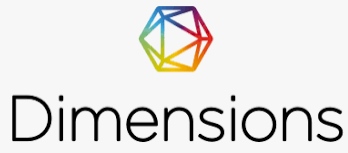


.jpg)
